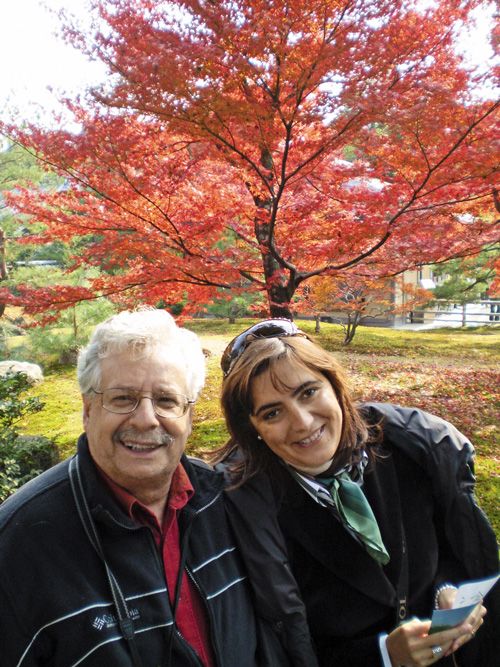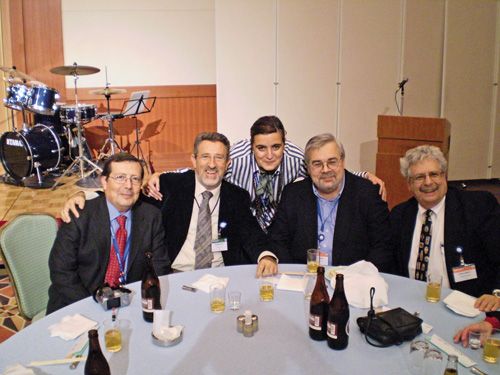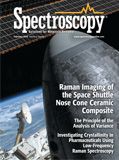Professor Joseph Caruso: In Memoriam
Spectroscopy
A tribute to a great scientist and a great man.
The most recent edition of the Winter Conference on Plasma Spectrochemistry, held in January 2016 in Tucson, Arizona, turned out to be an unexpected tribute to Professor Joe Caruso, who passed away on November 23, 2015, at the age of 75. As a former post-doc in Joe´s group at the University of Cincinnati, I was really moved by the homage that the plasma spectrochemistry community paid to Joe at the meeting.

Caruso and Montes-Bayón in Kyoto, Japan, in 2007, following the 2nd International Symposium on Metallomics, which was held in Nagoya.
Throughout the conference, the community expressed its appreciation of Joe both for his excellent work as a scientist and for his charming character. It was surprising to see the number of presentations dedicated to Joe even by scientists who did not share a specific research interest with him but who nevertheless recognized both his scientific input and his appealing personality. Joe´s scientific contributions, to analytical chemistry in general and to the field of plasma spectrochemistry in particular, are significant. He published more than 400 scientific papers and had a high impact on the field, as evidenced by his h-index of 54. He is perhaps best known for his most recent contributions to the fields of speciation and metallomics, including his founding of the journal Metallomics, but his previous work on low-pressure plasma sources and hydride-generation methods is also recognized for its importance. Given his important contributions, Joe received a number of well-deserved scientific awards, such as the 1994 Anachem award, the 2000 Spectrochemical Analysis Award given by the Analytical Division of the American Chemical Society, the 2013 Theophilus Redwood Lectureship Award from the Royal Society of Chemistry, and the 2014 Eastern Analytical Symposium Award for Outstanding Achievements in the Fields of Analytical Chemistry.

From left to right: Professor J.L. Gómez Ariza, Professor Alfredo Sanz-Medel, Dr. Maria Montes-Bayón, Professor Andreas Prange, and Professor J.A. Caruso.
Because of his many achievements, Joe was slated to give his first “Heritage Lecture” at the Winter Conference this year. Instead, a Caruso Memorial Lecture was arranged and was beautifully presented by Professor Chris Le of the University of Alberta, in Canada. Professor Le did an outstanding job describing the impact Joe had as a scientist and as a person. Dr. Julio Landero, currently a research assistant professor at the University of Cincinnati and a former post-doc in the Caruso group, and I tried to illustrate, during our introduction to Professor Le’s talk, what an excellent mentor for students Joe Caruso was. However, if I can be self-critical, I would say that our personal affection for Joe and his family charged the atmosphere with so much emotion that it was difficult for us to adequately convey both the impact of Joe’s character, particularly for those in the audience who did not have the chance to know him as closely as we did. Joe created a special family atmosphere in his research group, and his office door was always open to share a coffee (often accompanied by sweets or candies of some kind) with students or post-docs while discussing science in a relaxed way. Joe had a special ability to get all the work done without ever looking stressed or tense. He also could make a joke or a funny comment about any situation and relieve tension in even the most complex circumstances. And Joe’s wife, Judy, was also special to all of us. She accompanied him at many events and together they created a warm atmosphere in their home for students and friends, which was particularly special for foreign visitors like me; I never felt lonely even during the first weeks of being away.
I am very grateful that Judy, as well as Joe’s daughter Beth, were able to attend the event and see how much Joe meant to us. I know that this was not easy for them, and I applaud their effort and strength. I also wish to acknowledge the conference organizer, Professor Ramon Barnes, for making their attendance possible.
The plasma spectrochemistry community will miss an excellent scientist and a charming man. I personally will also miss an excellent mentor and a beloved friend.
Maria Montes-Bayón is a senior lecturer in the Department of Physical and Analytical Chemistry at the University of Oviedo in Oviedo, Spain.

LIBS Illuminates the Hidden Health Risks of Indoor Welding and Soldering
April 23rd 2025A new dual-spectroscopy approach reveals real-time pollution threats in indoor workspaces. Chinese researchers have pioneered the use of laser-induced breakdown spectroscopy (LIBS) and aerosol mass spectrometry to uncover and monitor harmful heavy metal and dust emissions from soldering and welding in real-time. These complementary tools offer a fast, accurate means to evaluate air quality threats in industrial and indoor environments—where people spend most of their time.
NIR Spectroscopy Explored as Sustainable Approach to Detecting Bovine Mastitis
April 23rd 2025A new study published in Applied Food Research demonstrates that near-infrared spectroscopy (NIRS) can effectively detect subclinical bovine mastitis in milk, offering a fast, non-invasive method to guide targeted antibiotic treatment and support sustainable dairy practices.
Smarter Sensors, Cleaner Earth Using AI and IoT for Pollution Monitoring
April 22nd 2025A global research team has detailed how smart sensors, artificial intelligence (AI), machine learning, and Internet of Things (IoT) technologies are transforming the detection and management of environmental pollutants. Their comprehensive review highlights how spectroscopy and sensor networks are now key tools in real-time pollution tracking.